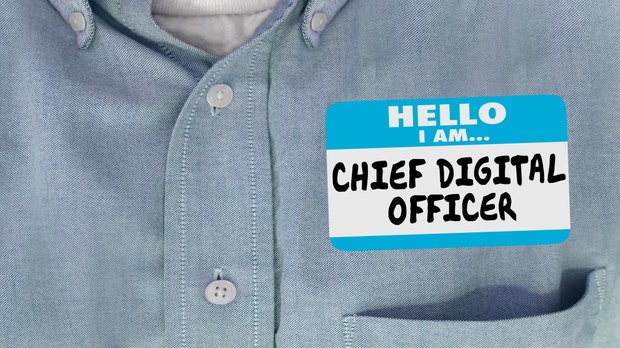Customer orientation is a significant competitive factor for every company. By using CRM software, customer management can be more time-saving and the quality can be significantly improved.
Cloud technologies offer many advantages, especially for customer management, and they also pay off when visiting customers. All customer data and processes can be viewed and updated on site. Startups in particular can benefit from this: cloud solutions are scalable as required and can grow with the startup. Tasks that require competence, specialist personnel and time expenditure, such as installation, configuration and data security, can be outsourced. In startups in particular, there is often a lack of resources and the necessary specialist staff. Furthermore, startups have a relative cost advantage through the use of cloud software, as the software costs are incurred on a monthly basis and the risk of a bad investment is significantly reduced.
In this article we present five helpful CRM tools for startups that offer a cloud solution, a German language version of the software and a product version tailored to startups. Further selection criteria for the products include ease of learning and a high level of user-friendliness, a mobile app and important integrations with other tools and monthly costs of less than 15 euros per user (providers with a free version are preferred).
Project planning and management in Bitrix24

Project planning and management in Bitrix24.
Bitrix is a very easy to use system with a huge variety of functions. In addition to classic customer and contact management, Bitrix offers document management, integrated email marketing, sales automation, invoicing and sales team management. There are also numerous functions from the field of project management, including task management, Gantt charts and, in the plus version, time recording. Telephone system functions such as group chat, video conferencing and telephony are also available in the free version.
Price : Bitrix24 offers a free version for twelve users and 5 gigabytes of storage space. The plus version is available for six users for 69 euros a month and provides companies with 50 gigabytes of storage. For 99 euros per month for 50 users, functions and storage space can be expanded.
Major integrations : Freshbooks, Dropbox, Quickbooks, Microsoft Office 365, Google Docs, Onedrive and more.
Special feature : Bitrix differs from the competition with its huge range of functions and can be used as a complete project management software.
Contact management in CentralstationCRM

Contact management in CentralstationCRM.
CentralstationCRM concentrates on standard functionalities and offers a clear customer and task management. The tool also shows open offers and all associated notes, emails and documents so that users can see all the details of the offer at a glance. Companies can import their contacts into the system via V-Cards (from Outlook, Apple Contacts, Gmail) or Excel lists. The software offers a smaller range of functions than, for example, Bitrix. If these functions are not enough, the system offers integrations with many different products and an API interface.
Local contact : CentralstationCRM is a software manufacturer from Cologne with data centers in Germany.
Price : CentralstationCRM is permanently free for startups (three users, 200 contacts, 20 megabytes of files). For 19 euros a month for three users, companies get 3,000 contacts and 1 gigabyte of files, for 39 euros a month for ten users 10,000 contacts and 3 gigabytes of files. The software can also be further scaled as required.
Important integrations : Newsletter2go, Fastbill, Snapaddy, Userlike and others.
Special features : CentralstationCRM has all CRM functions necessary for startups and is characterized by simplicity and a reduction to the essentials. This makes the software clear and easy to learn.
Automatic tracking of customer interactions in Hubspot CRM

Automatic tracking of customer interactions in Hubspot CRM.
In addition to contact and customer management, Hubspot also offers automatic logging of sales activities as well as functions for sales automation and maps the sales funnel. The CRM system is not the product with which Hubspot tries to earn money: The goal of the provider is to win over companies for the additional products Hubspot Marketing Hub, Sales Hub and Service Hub through the free CRM software. Hubspot’s marketing and marketing automation tool in particular is unique. Hubspot can pull data about people from their internet activity and email engagement rates, among other things. This means that data no longer has to be entered or uploaded into the CRM by a sales representative. The CRM system now also offers e-mail marketing. Users can have up to 2.
Local contact : Hubspot has a branch and thus a contact in Germany.
Price : Hubspot CRM is free for 1,000,000 records with no limits on the number of users and storage space, making it the only tool on our list that is 100 percent free.
Important integrations : Weclapp CRM, Hubspot Marketing Hub, Sales Hub, Service Hub and others.
Special features : The Hubspot CRM system stands out from the competition with its impressive data acquisition capabilities.
Sales pipeline in Pipedrive

Sales pipeline in Pipedrive.
Pipedrive is tailored for small business sales teams. In Pipedrive, users find a visual sales pipeline with which they can easily and clearly keep an eye on sales processes. You can view future events and estimated sales dates, manage sales teams, and forecast sales. Furthermore, the tool always prompts companies for the next activity. Another great feature of the tool is the customizable dashboard. In the dashboard view, users are shown their results in real time.
Local contact : Pipedrive has a German website and prices in euros, but unfortunately no customer service in German.
Price : The silver version of the software costs 12.50 euros per user and month (with annual billing). Companies get the advanced version of the software for EUR 24.20 per user per month.
Major integrations : Dropbox, Google Apps, Google Drive, Highrise, and more.
Specifics : Pipedrive is a great program for closing deals, but less so for customer care after the deal. Therefore, Pipedrive is best suited for businesses such as real estate companies that are not interested in after-sales support.
Reporting in Zoho CRM

Reporting in Zoho CRM.
The free version of Zoho CRM offers contact and customer management, task management, opportunity display, charts, a document library, call center interfaces and web forms. Furthermore, users have access to a wide range of reporting functions. With an upgrade, functions for sales forecasts, marketing campaigns, e-mail integration, social CRM, inventory management and process management can be activated.
Local contact : Zoho has a German website. However, prices are in dollars and customer support is in English.
Price : The CRM system is free for three users; it is limited to 25,000 entries and one gigabyte of storage space. Companies can upgrade to the standard version for 18 euros per user and month with monthly billing and 12 euros per user and month with annual billing. The upgrade to the professional version is available for 30 or 20 euros.
Major integrations : Mailchimp, Dropbox, G Suite, Adobe Sign, Microsoft Outlook, Microsoft Word, Eventbrite and others.
Special features : Zoho is known for the smooth import functions between the various Zoho tools (Zoho Books, Zoho Reports and more).


















